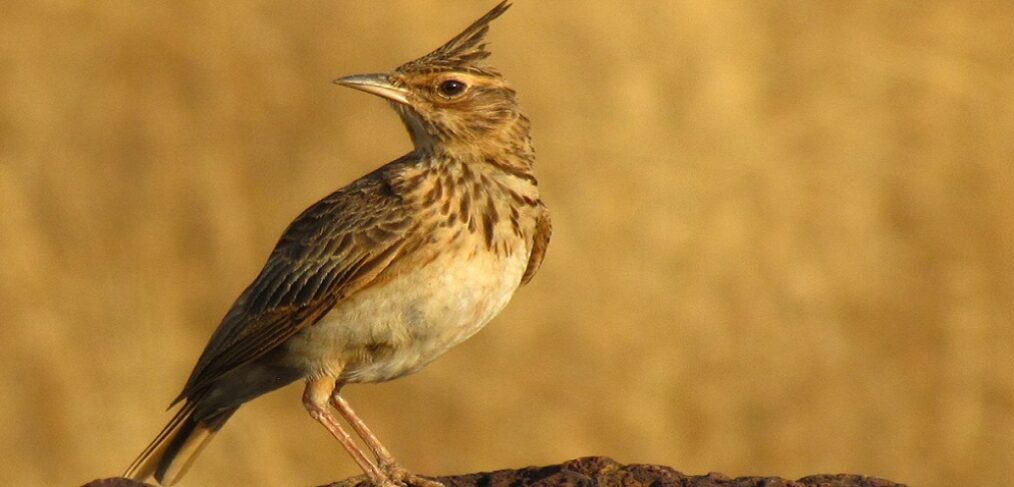
species of the week #73 – crested lark
Crested Larks were the “rubble birds” after the end of the Second World War. They inhabited the destroyed parts of the city until they were rebuilt. They are remembered by many older people because of their clearly visible, frequently erected bonnet. They actually inhabit treeless steppes with abundant sunny spots for sunbathing. So they found a suitable habitat in the broken, sandy roads. Today, Crested Larks are often found in the industrial and commercial areas of cities, where they like to hang out on gravelled parking areas during the day. When new building areas are developed, the Crested Lark is sometimes a temporary visitor, but disappears again as the construction phase progresses.
| Distribution status | extremly rare |
| Remainig deposits | Palatinate near Herxheim and Schifferstadt |
| Last sighting in Rhineland-Palatinate | current |
| Habitat | (modern) steppes and semi-deserts, vegetation-free fallow land |
| Threat | Habitat loss, sealing, insect mortality |
The Crested Lark sings similarly to the Skylark, but imitates other birds very well and readily. It can be seen all year round. Crested Larks are conspicuous in winter, when they form groups and hoe frozen seeds free together, sleeping close together in roosting hollows.
The Crested Lark was at home in large parts of Rhineland-Palatinate until the 1970s. In the meantime, the species is threatened with extinction throughout Germany. It likes it quiet, dry and with enough places for sand bathing and also builds its nest in the sun-warmed sandy soil. It feeds on seeds and insects. Especially for raising its young, the crested lark needs plenty of spiders and soft insect food, e.g. caterpillars.
In Ketsch on the Rhine, there is an exciting experiment on unplanted asparagus dams. Crested Larks like to use the spaces between the dams as nesting sites; it is hoped that adjacent dung heaps will provide a sufficient supply of insects in spring and early summer. By fencing off the areas, disturbances caused by vehicles and nest predators are avoided. In the last two years, there have already been offspring of the Ketch Crested Larks, and it is hoped to build up a spring population that will also colonise other habitats. The stabilisation attempt is to be continued for another 23 years and scientifically monitored.
Throughout Europe, in addition to stopping the use of land for construction activities, we need more extensive agriculture with wild margins, meadows and fallow land, as well as a ban on the use of biocides, especially along roadsides and railway tracks. In addition, wastelands at the edge of settlements can help. To achieve this, residents and municipalities must be educated about their ecological importance.
Here it goes to further species of the week
Photo: By Siddheshp – shot at Tembavli, Maharashtra, IndiaPreviously published: http://www.photos.siddhesh.in/photo.php?id=87&name=Crested%20Lark, CC BY-SA 3.0, https://commons.wikimedia.org/w/index.php?curid=25354720
